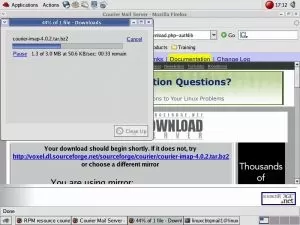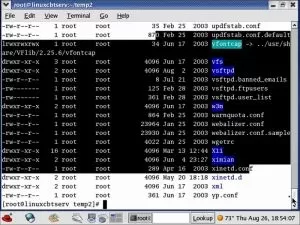Linux BASH Scripting (course with PDF handbook)
Ralph Traig
4:16:15
Description
Write once – execute multiple times!
What You'll Learn?
- How to build a BASH script
- Configuring work environment
- How to use variables
- How to use control statements and loops
- How to handle errors
- How to accept parameters for scripts and functions
- How to build functions and library of functions
- How to make a TUI script interface with dialog
Who is this for?
What You Need to Know?
More details
DescriptionIn short:
BASHÂ programming from scratch
Short video lessons
Handbook with over 50 pages
Exercises for each lessons
Solution proposals
Required base knowledge regarding Linux
When working with Linux in the professional way, we need to know plenty of commands, their options, syntax. That’s one of the biggest troubles for the beginners.
But command line has also huge advantage. When we connect together those simple commands, we can build our own tools, scripts, functions that may replace hundreds of other programs. Having such a new script, we just run it, and multiple actions will be executed at once.
What can be done with scripts? In short – if we can do something with commands, then we can do it also with script, and because on Linux everything can be done with commands, we can do everything with scripts. Some examples could be automated copying of files, installing software, configuring network and much much more.
But knowing the commands is not enough, to build the scripts. Apart from that, we need to know how to operate on variables, build conditional statements,loops, functions and more.
And that’s the topic of this course. The course not only teaches how to do something, but often shows how this could be done in different way, what are the advantages and disadvantages of different methods. Step by step, we will show how to build functions and how to create a library of the scripts.
The course contains a set of short lessons, each of them focusing on another topic. In the course handbook in the PDF format, for each topic, there is a short note with the most important information from the lesson and a set of exercises allowing to practice the knowledge. There are also the solution proposals, so one could say this course is an equivalent for a traditional classroom training, with the difference, that we don’t have lunch included.
After the course, you will be able to start working on Linux automation and there is no doubt, that automatic management of IT is the future. The cloud expansion caused that one admin is no more managing a couple of machines. One admin has under control hundreds or thousands of machines. That’s something what you can do as well!
Write once – execute multiple times.
Happy learning!
Rafał
Who this course is for:
- Linux, Unix admins
- Cloud services admins (Azure, AWS, Google, IBM)
- DevOps engineers
- Linux power users
In short:
BASHÂ programming from scratch
Short video lessons
Handbook with over 50 pages
Exercises for each lessons
Solution proposals
Required base knowledge regarding Linux
When working with Linux in the professional way, we need to know plenty of commands, their options, syntax. That’s one of the biggest troubles for the beginners.
But command line has also huge advantage. When we connect together those simple commands, we can build our own tools, scripts, functions that may replace hundreds of other programs. Having such a new script, we just run it, and multiple actions will be executed at once.
What can be done with scripts? In short – if we can do something with commands, then we can do it also with script, and because on Linux everything can be done with commands, we can do everything with scripts. Some examples could be automated copying of files, installing software, configuring network and much much more.
But knowing the commands is not enough, to build the scripts. Apart from that, we need to know how to operate on variables, build conditional statements,loops, functions and more.
And that’s the topic of this course. The course not only teaches how to do something, but often shows how this could be done in different way, what are the advantages and disadvantages of different methods. Step by step, we will show how to build functions and how to create a library of the scripts.
The course contains a set of short lessons, each of them focusing on another topic. In the course handbook in the PDF format, for each topic, there is a short note with the most important information from the lesson and a set of exercises allowing to practice the knowledge. There are also the solution proposals, so one could say this course is an equivalent for a traditional classroom training, with the difference, that we don’t have lunch included.
After the course, you will be able to start working on Linux automation and there is no doubt, that automatic management of IT is the future. The cloud expansion caused that one admin is no more managing a couple of machines. One admin has under control hundreds or thousands of machines. That’s something what you can do as well!
Write once – execute multiple times.
Happy learning!
Rafał
Who this course is for:
- Linux, Unix admins
- Cloud services admins (Azure, AWS, Google, IBM)
- DevOps engineers
- Linux power users
User Reviews
Rating
Ralph Traig
Instructor's Courses
Udemy
View courses Udemy- language english
- Training sessions 27
- duration 4:16:15
- English subtitles has
- Release Date 2024/03/04














